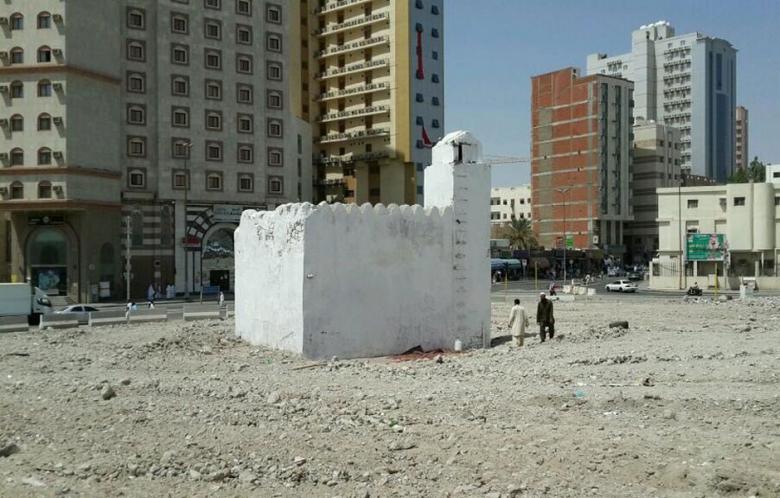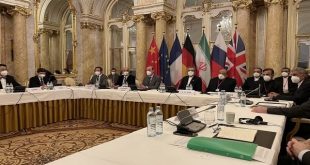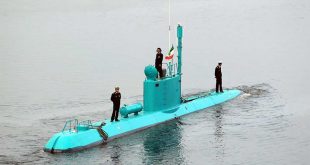For over a decade, Mecca – the holiest city in Islam – has been undergoing an unprecedented level of reconstruction to accommodate millions of pilgrims arriving year round. However, critics argue the massive expansion efforts have mercilessly destroyed invaluable historical and cultural sites, substituting them for crass commercialization and symbols of Saudi rule.
Without a doubt, Mecca is an extraordinary city. With a history stretching back before 600 BCE, Mecca has always been an important religious and economic center. But after the seventh century, with the emergence of Islam, the city, with the Kaaba at its core, became a commanding symbol of faith and power.
For more than a billion Muslims, prayers must face the direction of the Kaaba and each Muslim must perform pilgrimage to Mecca at least once in their lives.
Today, Mecca and its surroundings – with an estimated resident population of two million living in an area smaller than the city of London – is visited by at least 15 million Muslims throughout the year, three million of them descending at once during the Hajj period.
The level of crowd-management needed to shepherd and ensure safety would be a logistical nightmare for any authority.
“Fifty years ago, Mecca wasn’t a huge destination,” explained Abdul-Halim Jabr, an urban design consultant based in Beirut, who had worked for a few projects in the ancient city.
Jabr postulated the problem facing the Saudi kingdom arose after travel became cheaper, which in turn facilitated the growth of package tourism for Hajj and Umrah (a minor pilgrimage, performed at any time). In particular, the urban design consultant said, the increase of quotas by the authorities allowed two things to occur: it offset huge occupational fluctuations during peak and low pilgrimage seasons, and encouraged repeated Umrah visits.
“That occurred before they had a plan for a proactive, protected form of development for Mecca. They have tried to place strict controls for quotas now, but the damage is already done,” Jabr said.
Under the pretext of alleviating these growing pressures, Saudi authorities undertook various construction projects during the last three decades to revamp infrastructure and expand sites like the Grand Mosque, that surrounds the Kaaba, to accommodate the flow of millions of people.
“Mecca, especially the area around the Grand Mosque, is one giant construction zone, bigger than anything I’ve seen in my life,” said Nasser, a 29 year-old Kuwaiti engineer who visited Mecca twice, once in 2007, and recently in February.
“It’s the biggest crowd control dilemma in the world,” he added, “[the authorities] are trying by building trains, highways, and a walkway that circles the Kaaba. It’s an engineering nightmare.”

(Photo: Islamic Heritage Research Foundation)
The struggle over heritage
In the past decade, construction quickened and became more ambitious.
An estimated $20 billion has been spent on mega-projects which include a planned train system, mosque expansions, and the construction of fancy hotels and residential and retail complexes.
But these developments have taken a heavy toll on the cultural and historical relics that existed in Mecca for over a thousand years, a majority of which were removed to make way for the modernizing developments.
Saudi authorities, supported by religious scholars, offer a twofold argument for the removal of heritage sites: first, these sites pose security risks for visiting pilgrims due to their structural instability; and secondly, that these sites, while lacking any religious significance, may result in shirq, the worshiping of a person or object at the same level as God.
“The expansions for the Two Holy Mosques cannot be possible without the removal of these historic and religious relics, that can also potentially harm Muslims if they stay,” Saudi-based Sheikh Ibrahim al-Zoaby explained to Al-Akhbar.
“The decision comes in accordance with the fact that the biggest and most important relic is the House of God, the Kaaba, and these changes will benefit Muslims in terms of space, ease of movement, and health. However, if these conditions are not met, scholars will not provide edicts supporting changes,” he said.
Dr. Abu Bakr Bagader, an official for the Organization of Islamic Cooperation (OIC), an international group based in Riyadh meant to represent Muslim-majority countries, echoed this reasoning.
“The position taken by the government and officials in Saudi Arabia is to ease the mobility of Muslim pilgrims and to expand space for them to perform their rituals,” he said.
“I think [the development] is supported by many. They are not demolishing the relics to make them disappear, but because these weak structures can fall,” he added.
Bagader clarified that the OIC has currently no position regarding cultural or historical relics within Saudi Arabia. The only committee within the OIC that documents and advocates protection of heritage sites deals strictly with sacred places in Palestine.
“I think the argument is sensitive and difficult. Either you accommodate needs or you are stuck with the preservation of structures,” Bagader said, adding that unlike the case of Jerusalem or Hebron, “the conflict in Mecca is not about identity, but a conflict of scarcity of space.”
“This is absolutely rubbish. The OIC is a Saudi puppet, under the influence of petrodollars. It is a disgrace for them to say that,” retorted Dr. Irfan al-Alawi, an academic and founder of the Islamic Heritage Foundation as a means to document and raise awareness about the fate of heritage sites in Saudi Arabia.
Alawi first highlighted these changes more than twenty-five years ago when he was hired by the Saudi Ministry of Culture and Information, at a time when it temporarily considered maintaining heritage sites within Mecca and Medina.
“We achieved success in some locations, and then it became more difficult. The Wahhabis became more rigid,” he said.
Alawi argued the accelerated destruction process was linked to the rise of the Mutaween, the feared Saudi religious police who are the main proponents behind the removal of historic sites.
“It is not about danger [for pilgrims], but they believe that it attracts shirq,” he said, citing the destruction of caves, wells, and old mosques as examples of eradicated places that do not fit into the rhetoric of ensuring safety. The academic also spoke of an active attempt by the Saudi authorities to deny that these sites hold any significance as a means to tear them down.
Alawi’s points are corroborated by history.
As far back as 1803, Saudi Wahhabis, under the leadership of Abdul-Aziz ibn Mohammed ibn Saud, briefly captured Medina and Mecca from the Ottomans, and proceeded to destroy Islamic shrines and monuments viewed as idolatrous.
Over a century later, in 1925, at the dawn of the Saudi modern state, even more sites were leveled or painted over in Medina.
The past three decades witnessed an acceleration of this phenomenon.
According to the Washington-based Gulf Institute, Saudi authorities have destroyed nearly 95 percent of all historical relics and buildings within Mecca since 1985. These include the houses of Prophet Mohammad, his family, and his companions, replacing them with libraries, toilet facilities, parking lots, and commercial or governmental complexes.
Even more disconcerting for Alawi is the virtual silence by other Muslim countries.
“The problem is that these countries are afraid to speak against al-Saud. They feel they will lose funding or their workers will get kicked out. It’s emotional blackmail,” he said.
Alawi pointed out that even UNESCO has remained silent.
“The only place protected by UNESCO is linked to ancestors of al-Saud. You have the king and his relics, but nothing about the prophet, his family, or his companions,” he said.
“There is outcry in private by Saudi elites and citizens, but they are frightened by repression,” the academic added. “The only way we can stop further cultural vandalism is through bad publicity.”
For his part, Jabr agreed the strict religious interpretation associated with Wahhabism was a factor, but he also suggested that it stemmed from bureaucratic considerations.
“It’s easier to manage crowds going to one place rather than multiple shrines,” he mused.
Al-Akhbar attempted to contact the Saudi Ministry of Culture and Information, but was told no one was available for comment at this time.

Sign in Mecca posted by the religious police directed at pilgrims. (Photo: Islamic Heritage Research Foundation)
The ‘Vegasization’ of Mecca
Beyond the debate over heritage preservation, another crucial criticism towards the development projects revolve around Mecca’s commercialization.
“Mecca, to my regret, has become a site for real estate speculation. The name of the game is proximity to the Kaaba,” Jabr said, “Land is more expensive around the Grand Mosque than prime locations in major cities like New York or Paris.”
Two examples epitomizing these concern are the Jabal Omar complex, a 40-tower site, consisting of five star hotels, high-rises holding more than 500 restaurants and 4,000 commercial and retail shops, and the Abraj al-Bait Towers, which includes the Mecca Clock Royal Tower Hotel, the world’s third tallest tower and the world’s largest clock.
Both are the authorities’ pride-and-joy, showcasing the enormity of the city’s modernization project, and stand significantly close to the walls of the Grand Mosque that surrounds the Kaaba.
Like other mega-projects, foundations for the Abraj al-Bait Towers were built above an 18th century Ottoman citadel called the Ajyad Fortress, leveled in 2002.
Moreover, the buildings taking the place of ancient neighborhoods are designed to cater to the wealthy.
The asking price for a small studio apartment at the Abraj Towers starts at around $650,000, while renting a hotel room or apartment close to the Grand Mosque and other historic sites can cost more than $500 per night.
These rates clash with the spirit of Hajj, meant to bring Muslims together regardless of class, nationality, or creed.
“I cannot find anyone who defends the clock-tower, even the most patriotic Saudi cannot defend it. It is a travesty, a huge colossal mistake by any standards – religiously or in terms of urban design,” Jabr opined.
“In the seven years since my last visit, they built the clock-tower and the hotels. It’s a monstrosity. Rather than having all eyes fall on the Kaaba, now all eyes look up to the clock-tower,” Nasser remarked.
Nasser further remarked that hotels, retail, and other commercial center logos dominate much of the city.
It was also a concern shared by Zoaby.
“We know that the existing expansions seem to be for residential complexes or hotel towers which are suffocating the Grand Mosque,” the sheikh said.
“This is a source of concern for us, and we hope that important remaining relics are not overtaken by restaurants like McDonald’s, KFC, or others, and that important religious scholars whom we trust do not accept this.”
“I think they could have built new structures without destroying or building next to the Grand Mosque,” Nasser said. “But I guess they want prime estate for some Saudi prince.”
“It’s funny, it doesn’t work with their supposed puritan approach,” the former pilgrim concluded dryly.
 WILAYAH NEWS VOICE OF THE GLOBAL AWAKENING
WILAYAH NEWS VOICE OF THE GLOBAL AWAKENING





Yes! Finally someone writes about home equity credit lines.
Do you mind if I quote a couple of your posts as long as I provide
credit and sources back to your webpage? My blog is in the exact same area
of interest as yours and my visitors would certainly benefit from some of the information you provide here.
Please let me know if this alright with you. Appreciate it!
Also visit my website; karaoke professional system
This іs a topic that’s near to my heart… Best wishes!
Where are yoսr contact details though?
Rview my ѕite Herve Leger Dresses
Hurrah, that’s what I was searching for, what a material!
present here at this webpage, thanks admin of this site.
Feel free to visit my web site; how To start a blog gala darling
Neat blog! Is your theme custom made or did you download
it from somewhere? A theme like yours with a few simple
adjustements would really make my blog shine. Please let
me know where you got your theme. Appreciate
it
my blog … opera mini apk apps
What’s Going down i’m nnew to this, I stumbled upon this I have discovered It absolutely helpful
and it has helped me out loads. I am hoping to contribute & aid other customers like
its helped me. Good job.
Good day! Do you know if they make any plugins to protect against hackers?
I’m kinda paranoid about losing everything
I’ve worked hard on. Any recommendations?
Hey there! Quick question that’s totally off topic. Do you know how to make your site mobile friendly?
My site looks weird when browsing from my iphone 4. I’m trying to find a theme or plugin that might be able to correct this
issue. If you have any suggestions, please share. Cheers!
I think that what you published was very logical.
But, what about this? what if you added a little content?
I mean, I don’t want to tell you how to run your blog, however suppose you
added a title to maybe grab a person’s attention? I mean Mecca
: a master prepared mixed-use development by simply Ayala Land set to change the entertainment panorama of Makati. Distinct Lifestyle for the Loved ones: Multi-faceted fun living at the heart of Makati’s premier lifestyle recreation space.
For latest information you have to pay a quick visit the
web and on web I found this website as a most excellent website for most up-to-date updates.
I did get the paint for free to try therefore I could share my experience with you, but all views and a few ideas are my very own!
disney coloring pages minnie mouse